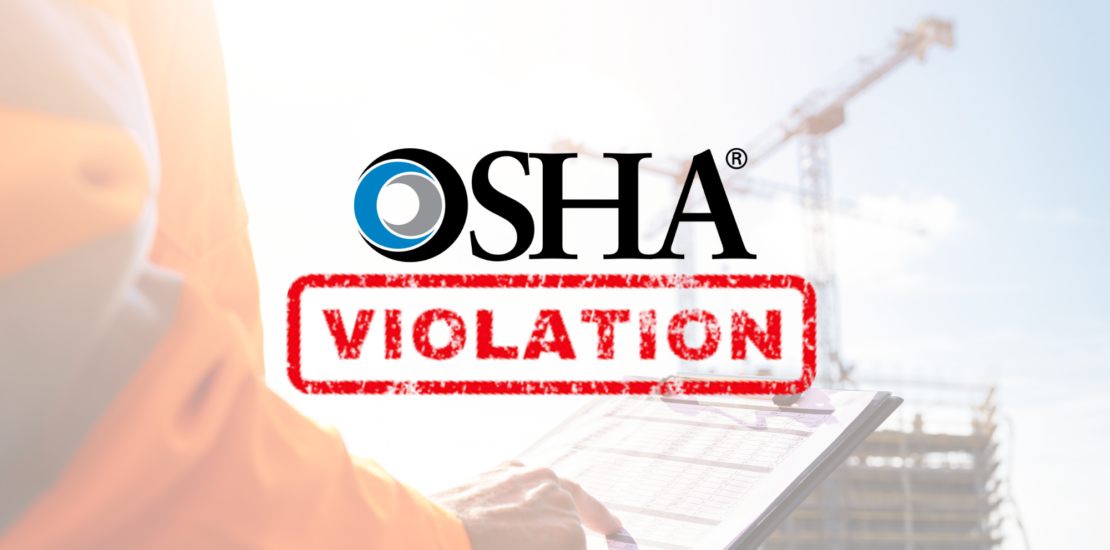- December 9, 2023
- Posted by: Rachel GoDaddy
- Category: Uncategorized

OSHA’s Top 10 Violations 2023
At the National Safety Council (NSC) Safety Congress & Expo in 2023, Eric Harbin, OSHA Region 6’s regional administrator, shared OSHA’s top 10 violations for the fiscal year 2023 (spanning October 1, 2022, to September 29, 2023). Here’s a detailed look at the top 10 violations for this period:
10. Machine Guarding (1910.212)
Continuing its presence in the top 10, Machine Guarding saw an increase in violations from 1,370 in FY 2022 to 1,644 in FY 2023. Plastic products manufacturers were most commonly cited. Machine guards are essential safety tools designed to protect employees from hazards associated with machinery, especially rotating parts and sparks.
9. Personal Protective Equipment – Eye and Face Protection (1926.102)
Retaining its ninth spot, this category saw an increase in violations to 2,074 in FY 2023. Roofing contractors were frequently cited for failing to provide necessary eye and face protection against hazards like flying particles and molten metal. Comfort and fit are crucial factors for ensuring compliance with these safety measures.
8. Fall Protection – Training Requirements (1926.503)
With 2,112 violations, this standard remains crucial for preventing workplace falls. The rise in violations from 1,556 in the previous year indicates ongoing challenges in effectively training workers on fall protection systems and maintaining proper certification records.
7. Respiratory Protection (1910.134)
Dropping to seventh place, Respiratory Protection saw 2,481 violations. Automotive paint and body shops were notably non-compliant. Selecting appropriate respirators involves assessing environmental hazards and considering factors like workplace characteristics and employee needs.
6. Lockout/Tagout (1910.147)
Lockout/Tagout violations rose to 2,554, underscoring the importance of controlling hazardous energy during machine maintenance. This standard requires implementing an energy control program, with lockout being the preferred method whenever possible.
5. Powered Industrial Trucks (1910.178)
With a significant rise to 2,561 violations, this category highlights the need for proper operation and maintenance of industrial trucks, particularly in the plastic product manufacturing industry. The standard covers a range of vehicles, emphasizing operator training and safety in vehicle usage.
4. Scaffolding (1926.451)
Moving up to fourth place, Scaffolding violations increased to 2,859, with masonry contractors most often cited. The standard emphasizes the importance of structural integrity and protective measures like guardrails and personal fall arrest systems to prevent accidents.
3. Ladders (1926.1053)
With an increase to 2,978 violations, Ladder safety remains a concern, particularly in the roofing industry. The standard specifies safety protocols for various types of ladders, emphasizing the importance of proper use and maintenance to prevent accidents.
2. Hazard Communication (1910.1200)
HazCom retained its second spot with 3,213 violations. The standard covers hazard classification, communication programs, labeling practices, and the management of Safety Data Sheets (SDSs), crucial for chemical safety in workplaces.
1. Fall Protection – General Requirements (1926.501)
Topping the list for the 13th consecutive year, Fall Protection violations surged to 7,271. This standard includes mandates for guarding holes, installing guardrails and toe-boards, and using harnesses, safety nets, or railings to mitigate fall hazards.
OSHA’s Top 10: Safety Action Plan
OSHA’s top 10 violations list serves as a vital reminder of the ongoing challenges in workplace safety and compliance. These findings highlight key areas where employers and employees alike must focus their efforts to ensure a safer work environment. It’s important for employers to take these insights seriously and proactively work towards enhancing safety protocols and training programs. By doing so, we can collectively work towards reducing these violations and, more importantly, safeguarding the well-being of our workers.
